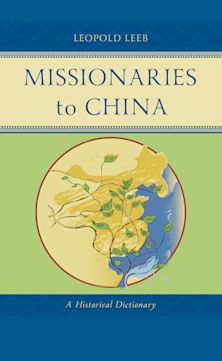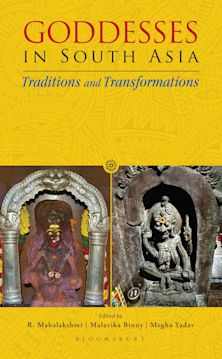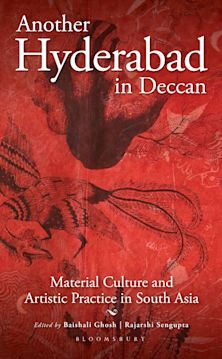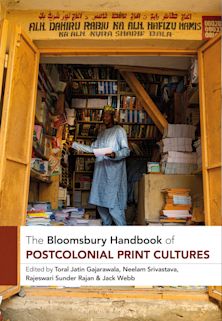- Home
- ACADEMIC
- History
- Asian History
- Tibetan Buddhism among Han Chinese
Tibetan Buddhism among Han Chinese
Mediation and Superscription of the Tibetan Tradition in Contemporary Chinese Society
Tibetan Buddhism among Han Chinese
Mediation and Superscription of the Tibetan Tradition in Contemporary Chinese Society
This product is usually dispatched within 1 week
- Delivery and returns info
-
Free US delivery on orders $35 or over
You must sign in to add this item to your wishlist. Please sign in or create an account
Description
This study analyzes the growing appeal of Tibetan Buddhism among Han Chinese in contemporary China, Hong Kong, and Taiwan. It examines the Tibetan tradition’s historical context and its social, cultural, and political adaptation to Chinese society, as well as the effects on Han practitioners. The author's analysis is based on fieldwork in all three locations and includes a broad range of interlocutors, such as Tibetan religious teachers, Han practitioners, and lay Tibetans.
Table of Contents
Chapter One: The State, Popular Imagination, and Traditional Chinese Cosmology
Chapter Two: Superscribing New Meaning on Guan Gong, the Chinese ‘God of War’
Chapter Three: The Confucian Revival and Tibetan Buddhism
Chapter Four: Pragmatism, Protestantism and Tibetan Buddhism in Hong Kong
Chapter Five: Tibetan Deities and Spirits in a Multilayered Tibetan Landscape
Chapter Six: Chinese Ghosts and Tibetan Buddhism
Conclusion: Tibetan Buddhism Engaging Contemporary China: Continuity, Change, and Authenticity
Product details
| Published | May 28 2020 |
|---|---|
| Format | Hardback |
| Edition | 1st |
| Extent | 314 |
| ISBN | 9781498584647 |
| Imprint | Lexington Books |
| Illustrations | 13 colour illustrations; 6 tables; |
| Dimensions | 9 x 6 inches |
| Publisher | Bloomsbury Publishing |
About the contributors
Reviews
-
Tibetan Buddhism among Han Chinese provides the best overview to date of the contemporary wave of Han Chinese engagement with Tibetan Buddhism. The book is clearly written and is easily accessible to an upper-level undergraduate audience.
H-Net: Humanities and Social Science Reviews Online
-
Tibetan Buddhism among Han Chinese is a new contribution to the growing field of Sino-Tibetan Buddhist studies concerning the presence of Tibetan Buddhism in the religious landscape of contemporary China. Its ethnographic dynamics afford an extensive discussion of what the author terms the “Chinese superscriptions” of Tibetan Buddhism regarding the increasingly individualized interpretations and practices of this non-Chinese religion.
Dan Smyer Yü, Yunnan University
-
The growing cultural and spiritual influence of Tibetan Buddhism in the West is well-known, but, unbeknownst to most scholars and observers, growing numbers of Han Chinese are practicing the religion too. This is a significant contribution to the study of the modern transformations of Tibetan Buddhism in a context of globalization.
David Palmer, University of Melbourne
-
The book is well structured and each chapter has a clear focus…. Tibetan Buddhism among Han Chinese is written in a highly accessible style and deserves to be read by anyone seriously interested in Buddhism in the contemporary world. Covering both urban and rural circumstances, the author provides a nuanced account of the adaptation of Tibetan Buddhism in Chinese cultural settings. It provides an insightful perspective into the everyday lives of Chinese practitioners living in various localities. It shows that superscription is embedded within the Chinese everyday lives and that it is experienced in various forms. The book will appeal to a wide audience of scholars and practitioners of Buddhism as well as of cross-cultural religious communication across the globe.
Anthropos
-
This volume is to be commended for how it successfully touches upon many topics within religious studies and offers fascinating insights. Unsurprisingly, this volume would prove invaluable to those interested in any manifestation of Buddhism in China and Tibetan Buddhism. However, by offering truly fascinating insights into the very nature of religion in China, this volume would also be of immense worth to those interested in Chinese popular religion and the broader field of religious deconstruction. Moreover, Esler’s rich ethnographic process would interest those interested in the ethnography of religion. Finally, much of this volume pertains to China’s political and cultural sphere of religion. This volume would, therefore, also be of worth to those interested in religion and politics.
Religious Studies Review

ONLINE RESOURCES
Bloomsbury Collections
This book is available on Bloomsbury Collections where your library has access.


































